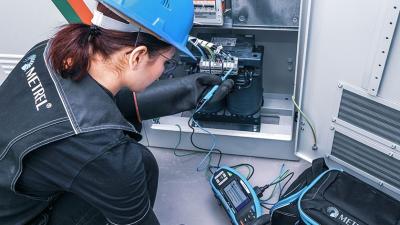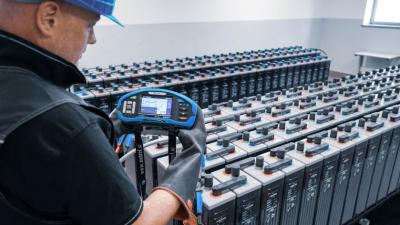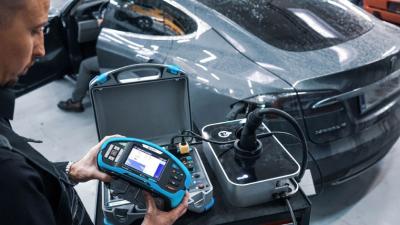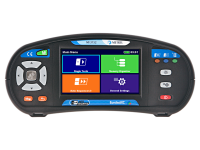DC installations
Special locations

DC powered installations - DC power is again, after more than a hundred years, becoming a major player in both distribution and consumer sides of the electrical network. It has always been used in some ways, examples being HVDC, or more lately UHVDC energy transfer over long distances and between incompatible AC grids, and also very low power battery-powered devices. It is now gaining acceptance again with advent of distributed power generation. Solar and fuel cells generate DC power directly, while microturbines, small hydro generators and wind turbines generate AC at a different frequency from standard mains. The easiest way to change frequencies and stabilise the grid is to convert it to DC first. In both cases, conversion from DC to AC can be avoided to boost efficiency. A home with its own power generation can have almost all everyday devices powered directly by DC, plus some newer increasingly popular ones like a vehicle charging station and energy storage.
LVDC home installation - Low voltage for a home is usually under 50 VDC. The value is chosen for safety reasons – there is little or no risk of electric shock at this low voltage, making the system intrinsically safe. At the same time, the voltage must not be too low, as losses in wires can become considerable even at such small distances. A lot of small devices also runs at voltages like 12V or 24V, making these values worth considering.
The the major advantage of a DC installation in a home with local power generation is efficiency. Local generator for DC can be:
- Solar power, which already produces DC voltage,
- Wind power, which for small turbines produces a high frequency AC that is more efficiently transformed to DC than mains frequency AC,
- Fuel cells.
There is a number of savings compared to using AC: no conversions for most the commonly used devices (saving materials and energy), better use of conductor cross-section with no skin effect and reactive power, a genuinely uninterrupted service (AC can blink for some milliseconds to resync), and ability to charge local energy storage directly. Local storage for the amount of energy that DC devices need is much more affordable than powering the whole system. There may be need for changes in DC level, but when well-executed this is a highly effective transformation. The main problem with DC in a home is that it (currently) cannot power every home appliance. Most typical that require AC are washing machine, fridge and stove.
EVSE DC charging - With current technologies DC charging stations are the fastest way to fill a car battery. It connects directly to the car battery, bypassing internal converter. In other words, the conversion is made outside the car. This removes problems with internal components that couldn’t handle high currents. DC stations in 2019 can provide up to 120 kW, with solutions for up to 350 kW under development. Most cars however can only handle 50 kW. DC and fast charging are possible using specially installed systems, such as CHAdeMO, a proprietary Tesla supercharger, or an adapted (but compatible) IEC type 2 connector. Generally, DC charging is designed to be the fast option.
There are currently laboratory experiments on charging cars directly with DC from solar panels. Photovoltaics are not a stable source, so both the voltage and current on the output have to be regulated. An example is a system developed by TU Delft, which is small (about 30% of regular AC charging station) and 96% effective. The DC/DC regulator works using silicon-carbide field- effect transistors and a quasi-resonant converter. It uses both solar DC and grid AC power and can provide 10 kW power. It allows for stacking the systems together for up to 150 kW systems suitable for business parks or large highway service stations. There is an option to charge an extra battery with solar power. A system to do fast battery to battery charging exists, but it is designed for large-scale and very fast charging.
Measurements
MI 3155 is the trusty companion for measurements on a DC system. Voltages used in domestic and EVSE installations are generally below 500 V DC, which is still comfortably within its safety certification. Measurements are similar to any TT, TN or IT grounded installation: earth resistance, insulation between phase and neutral with appropriate DC test voltage, equipotential bonding and tests of protective devices, MRCDs or Modular Residual Current Devices are necessary during the line and loop impedances. There are some exceptions to testing in particularly low-voltage installation, e.g. there is less need for bonding where voltages don’t reach 50 VDC. Tables for touch voltage and shut down time are different. Both switches and isolating devices need to conform to special requirements against arcing. Arcs are common even at low voltages (typical welding rig works at 24 V).
MI 3108 may be necessary for a more thorough test of the photovoltaic panels, as it supports their specific needs.
















